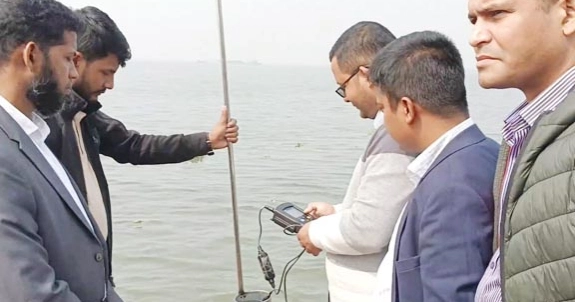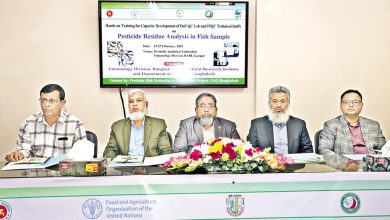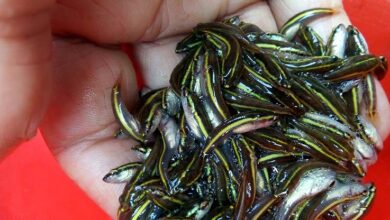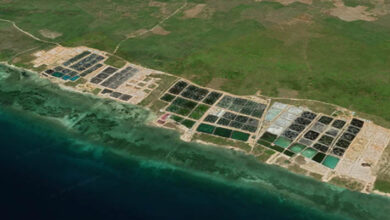Mass fish deaths in Meghna River spark investigation and concerns for fisheries sector

A massive fish die-off in the Meghna River, spanning approximately 12-13 kilometers in the Motlob Uttar area of Chandpur, has raised alarm among local fishermen and environmental authorities. In response, the Department of Environment and the Fisheries Department have formed an eight-member high-level investigation committee to determine the cause of the ecological disaster.
The committee, led by Dr. Mohammad Sohrab Ali, Additional Director-General of the Department of Environment, and Alamgir Kabir, Senior Assistant Director of the Fisheries Department, conducted a site visit on January 30. They collected water samples from Shatnol, Babu Bazar, Mohanpur, and Eklashpur for further laboratory analysis in Dhaka.
Declining Water Quality and Industrial Pollution Identified as Key Causes
Preliminary water tests indicate that pollution and deteriorating water quality are the main factors behind the mass fish deaths. The pH level in the river has dropped to 6–6.5 ppm, compared to the normal range of 7.5–9 ppm. Ammonia levels, which should be around 0.1 ppm, have risen to 0.2 ppm or higher. Oxygen levels, essential for aquatic life, have plummeted from the ideal 5–5.5 ppm to a dangerously low 1–1.5 ppm.
Experts suspect that chemical waste from factories in Narayanganj and Munshiganj districts is contaminating the Meghna River, disrupting its delicate ecosystem and severely affecting fish populations. The pollution has also altered the migratory path of the prized hilsa fish, a staple of Bangladesh’s seafood industry.
Fishermen Struggle as Livelihoods Collapse
For nearly a month, fishermen from villages along the Meghna River, including Shatnol, Malopara, Babu Bazar, Dashani, Mohanpur, Hashimpur, and Zahirabad, have been unable to catch fish. Native species such as chewa, puti, shrimp, pangash, kachki, boicha, and belye have been found floating dead, along with other aquatic life like frogs, leeches, and snakes.
Local fishermen report extreme financial hardship due to their inability to work. “We have taken loans from NGOs to buy boats and nets, but now we cannot even afford to pay the installments,” said Pradip Chandra, a struggling fisherman. “Our families are going hungry.”
Urgent Action Needed to Protect Bangladesh’s Fisheries Sector
Senior Fisheries Officer Vijay Kumar emphasized the need for immediate intervention to prevent further damage to fish stocks and the livelihoods of thousands of fishermen. Mizanur Rahman, Deputy Director of the Department of Environment, stressed the importance of addressing industrial pollution to restore the Meghna River’s water quality.
This incident underscores the urgent need for stricter environmental regulations, improved wastewater treatment, and sustainable fisheries management to protect Bangladesh’s aquatic resources. Without swift action, the nation’s seafood sector and coastal communities face devastating long-term consequences.




